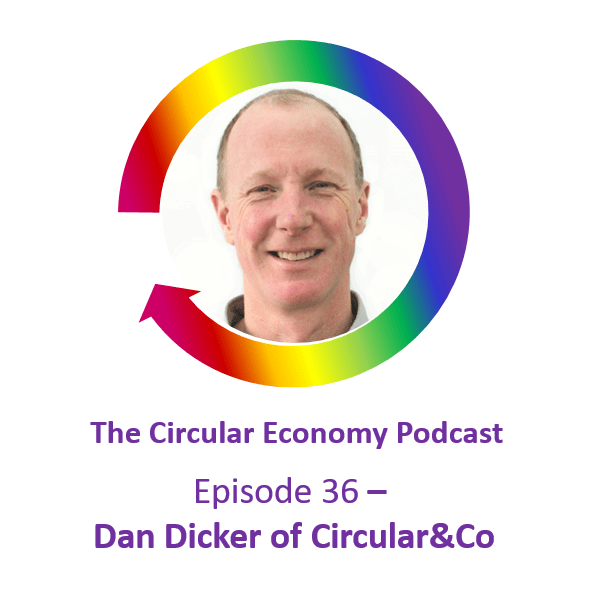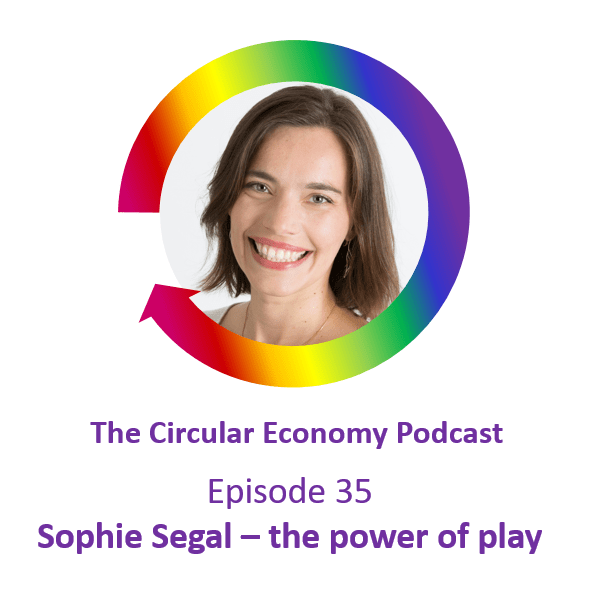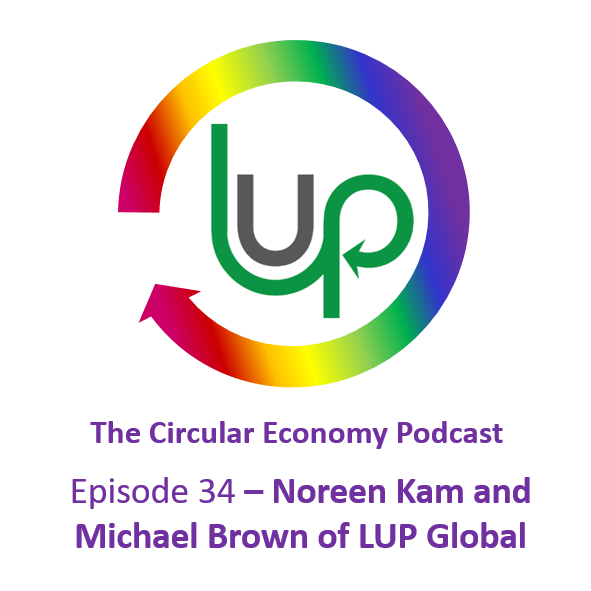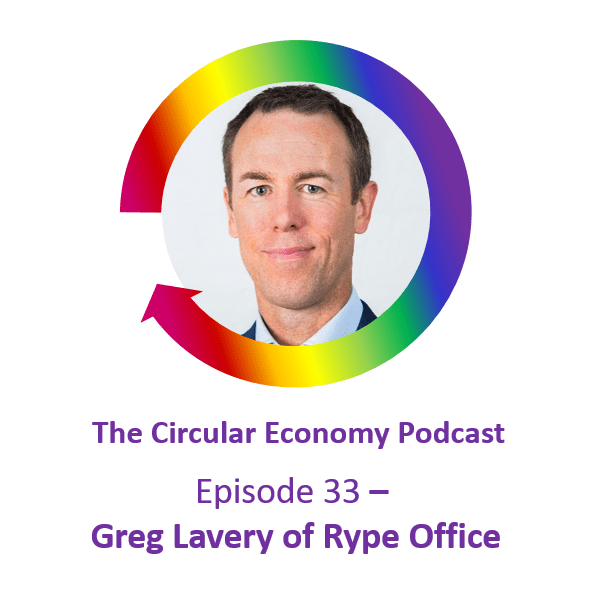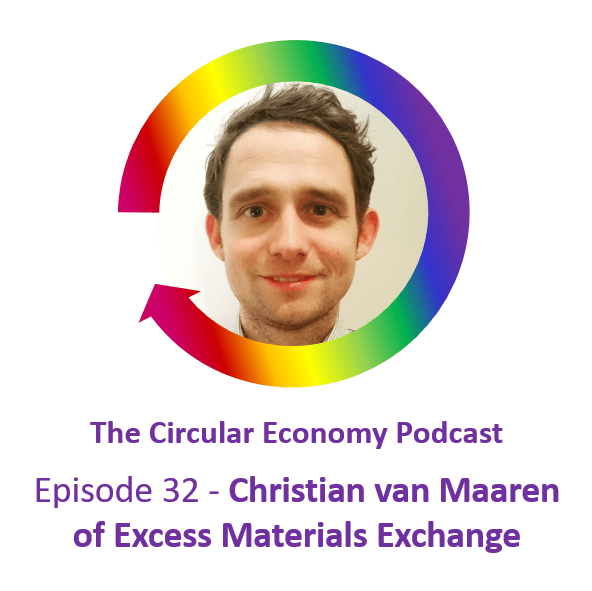Podcast: Play in new window | Download
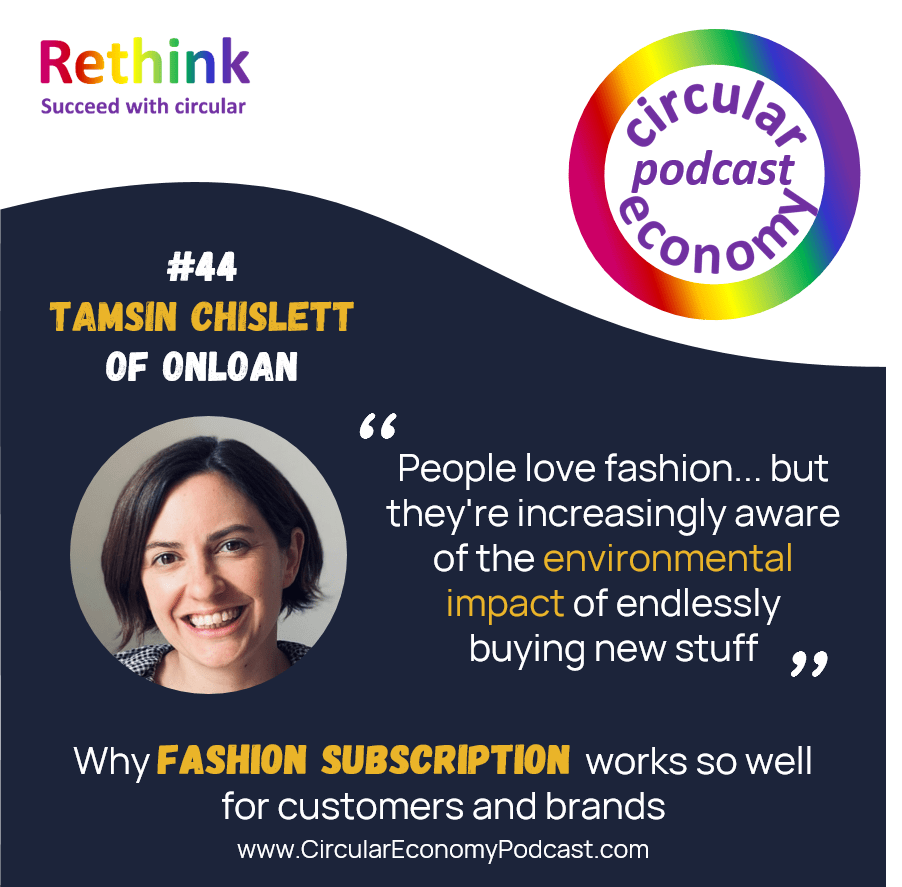
Catherine Weetman talks to Tamsin Chislett, cofounder of fashion subscription startup Onloan, which has grown strongly this year despite lockdown, and is now working with 25 fashion brands.
We find out why fashion subscription works so well for the customer and the brands, why Onloan’s customer base doesn’t fit typical demographics, and how Tamsin convinced those first few brands to come on board.
Podcast host Catherine Weetman is a circular economy business advisor, workshop facilitator, speaker and writer. Her award-winning book: A Circular Economy Handbook: How to Build a More Resilient, Competitive and Sustainable Business includes lots of practical examples and tips on getting started. Catherine founded Rethink Global in 2013, to help businesses use circular, sustainable approaches to build a better business (and a better world).
Stay in touch for free insights and updates…
Read on for a summary of the podcast and links to the people, organisations and other resources we mention.
You can subscribe to the podcast series on iTunes, Google Podcasts, PlayerFM, Spotify, TuneIn, or search for “circular economy” in your favourite podcast app. Stay in touch to get free insights and updates, direct to your inbox…
Links we mention in the episode:
- Onloan’s website: https://onloan.co/
- Onloan’s Instagram: https://www.instagram.com/onloan.co/
- Tamsin on Twitter: https://twitter.com/TamsinChislett
- Episode 18 Eve Kekeh of Bundlee https://www.rethinkglobal.info/episode-18-eve-kekeh-of-bundlee/
- The modular shoe I mentioned was Ze o Ze by Daniela Bekerman http://design-milk.com/ze-o-ze-modular-shoes-by-daniela-bekerman/
- Episode 33 Greg Lavery of Rype Office https://www.rethinkglobal.info/episode-33-greg-lavery-of-rype-office/
- RePack, returnable e-commerce packaging available in Europe & N America https://repack.com
- Charlotte Morley of The Little Loop – The UK’s first rental marketplace for children https://thelittleloop.com

About Tamsin Chislett
Tamsin is co-founder of Onloan, a fashion rental subscription service. Onloan is the only UK rental company to partner directly with top contemporary fashion brands, focus on ‘elevated daywear’ (not primarily occasionwear), and do all garment care and logistics in-house.
For customers, Onloan offers a way to enjoy all the newness and variety of fast fashion, but without the waste, and with much better clothes.
Before Onloan, Tamsin worked in strategy consulting, investment, and for a Ugandan cotton factory which secured the first Fairtrade cotton certificate in East Africa.
Interview Transcript
Provided by AI – add ~1:45 mins for the finished episode
Catherine Weetman 00:00
In today’s episode we talk to Tamsin Chislett and find out how she started Onloan, a fashion rental subscription service. Onloan is a bit different to other UK fashion rental options because it partners directly with top contemporary fashion brands. And it focuses on elevated daywear rather than occasionwear. Onloan’s also different because it does all its all its garment care and logistics in house Onloan offers its customers a way to enjoy all the newness and variety of fast fashion, but without the waste and with much better clothes. Tamsin and her co founder Natalie say they’re inspired by past decades where clothes were less disposable, more fun and better made when fashion was truly enjoyed not consumed. Before Onloan, Tamsin worked in strategy consulting, in investment, and for a Ugandan cotton factory, which secured the first Fairtrade cotton certificate in East Africa. Tamsin, welcome to the Circular Economy Podcast.
Tamsin Chislett 01:00
Thank you for having me. It’s great to be here.
Catherine Weetman 01:02
Yeah, I’m looking forward to finding out more about Onloan. And before we get into the why, and how of Onloan, let’s do a quick bit of fashion jargon busting. What on earth is elevated daywear?
Tamsin Chislett 01:16
It’s a very fair question. And so we use elevated day where to describe all of the fun clothes that you might want to wear on a day to day basis. The reason we talk about it is because fashion rental has a reputation for being all about event dressing. So historically, you might have rented a dress to wear to a wedding, or to a friend’s birthday. And yet, what we’re doing is making fashion rental irrelevant for every single day. And making it possible to rent any item that you don’t think you’re going to love forever. So instead of popping to Zara, buying something that you know, you’ll get bored of within a few weeks, we think you should rent it instead. So that once you’re bored of it, someone else can enjoy it after you.
Catherine Weetman 02:00
Brilliant. And we might come back to some of that later, when we hopefully get time to talk about what’s happened during lockdown, and how that’s affected the two markets. So what kind of people choose rental subscription models for fashion, and why?
Tamsin Chislett 02:17
We have a really diverse range of customers. So I’m really diverse in terms of age, we’ve got, you know, customers, pretty much in every decade, we’ve got mothers and daughters who both rent, and we’ve got customers all over the country. So we have some in the Isle of Wight and Aberdeen, we now ship to Ireland, and, and also really diverse in terms of vocation. So lots of professionals or creatives. But a real mix. What we found is the unifying factor amongst all of this is a mindset about fashion. So you have to love clothes to want to bother to rent them. You know, it’s not a service that is picked up by people who aren’t interested in clothes, or don’t see it as an important part of their lives. And for that segment of people, they’re probably already more sustainable than most of us in many ways. And, but once these people love fashion, and they really want newness and variety, and they want to try out new styles, but they’re increasingly aware of the environmental impact of endlessly buying new stuff. And so it’s really it’s a it’s a group of people who are kind of early adopters, increasingly knowledgeable about the environment, love clothes, but really want a new way to access them that that doesn’t make them complicit with environmental damage. Hmm.
Catherine Weetman 03:30
Excellent. That’s kind of shows your background I guess in in investments and so and then that you’ve really defined your, your niche market and sweet spot on you in terms of you know, what, exactly what they’re looking for, and what’s driving them. So that Yeah, but that’s, yeah,
Tamsin Chislett 03:47
we we thank you. Yeah, we did think that that’d be a sort of clearer demographic group that we would be going after, you know, I’m in my 30s, as is my co founder. And we sort of assumed that women in their 30s with busy lives, who were a bit fed up of the high street wanted to graduate on to better brands, but maybe couldn’t afford to yet, we thought they would be our core customer. And it’s actually been really nice to discover that it’s a much bigger age range and diverse group of customers than that. And any, as I say, it’s really the mindset that unifies people together.
Catherine Weetman 04:20
That’s the word that was coming to my mind then, was, you know, looking looking for people with a mindset rather than trying to appeal to, as you said, an age group and so on. And I’m guessing that’s starting to filter into a lot of different product ranges as well in terms of what people are looking for, you know, there’s a lot of evidence to say that people are looking for the brands they you know, kind of one wants to spend their money with and that they identify with, they want them to share value, share values with the brand and they want to they want to partner with brands that are doing the right thing for the planet and people and have, you know, have the right kind of ethos? So, I’m talking about other brands, if you’ve partnered with quite a few different clothing brands, how did those early pitches go? And how did you convince them? To let them you know, to to give you clothes that they, they, they could sell instead? You know, what, how did that work?
Tamsin Chislett 05:27
Yeah, they were a real, real mixed bag at the beginning. So our philosophy from the get go was that we had to have the best clothes, that in order to convince people to switch their habits from, you know, buying fast fashion, which is so easy, and so fashion-forward in the UK. And then we really needed to have the best of the best designers working with us. So we could just offer a great product. You know, I still think it’s true that no matter how interested and excited people get about being more environmentally sustainable, they still ultimately just want a great product, first and foremost. So nailing those designer partners was a top priority. And when we did the very first pitches, we didn’t actually really have anything to show for ourselves. So we were very fortunate to get a first meeting with a brand called Alexa Chung. And I essentially cornered the MD at a dinner that I managed to get into and begged him for a meeting. And we got one. And we spoke to them, before we had anything. So we didn’t, we didn’t have any money to spend on clothes, we didn’t have a website, I think we had a name, maybe not much of a strategy, but we just knew rental was going to be big. And we knew that we were you know, between myself and nothing, my co founder, we had skill set to kind of make the most of it. And so we Yeah, we gave him the hard sell on how important it was going to be as part of the fashion industry. And very fortunately, they agreed to be our partner. And from there, it just sort of snowballed. So we, we then went to Paris, and our first buying trip met with about 10 different brands, and I think came home with partnerships with maybe six or seven of them. And, and it tended to be so brands that were sustainability minded. Got it straight away, you know, in a way they were already looking for routes to, to serve customers up with their really amazing, great clothes, but without having to force them down that route of buying, wearing a few times and then letting it sit in the back of your wardrobe. And so the sustainability guys got it. And then for other brands, they got excited about it as a marketing channel. So they they understood that rental is a really great way for people to try out new brands they haven’t tried before. And they don’t really you know, they’re not going to commit to because the price points quite high. And so yeah, a lot of brands saw it as just a great opportunity to get their clothes out there being experienced by people. And then of course, we had some that were were slower movers, let’s say who were hesitant for a couple of reasons, partly because they were worried that rental would cannibalise sales. So you know, somebody could rent the dress, why would they buy it is that sort of thinking? You know, our argument is always well actually, they’re not going to buy it anyway, they’re going to buy a dress in Zara, so you might as well try and rent them your dress, which is much better quality instead. And, and some of them were hesitant just because we were young and new and probably realised at that point that we didn’t have a large chequebook. And, but actually, I’m sure we’ll talk in a minute about COVID and how things have changed. But the conversation we’ll be having with brands has changed so much over the last 12 months. And now I think every fashion brand realises that rental is going to be part of the future of the industry. And every single fashion brand is trying to work out the best way to get involved. And so we we now work with lots of the dream designers that we’d really hope to and kind of adding continuing adding more to the left, so it’s got a lot easier.
Catherine Weetman 08:47
Brilliant. So you’ve made loads of progress. And since that first first pitch one with no money and maybe not even a brand name. And so how is Onloan different to other fashion rental companies? Because there are a few independents out there, aren’t there, renting, renting other brands clothes. How is it different?
Tamsin Chislett 09:07
Yeah, there are a few it’s been amazing to see how many have sprung up in the last 18 months I think I guess it’s always good as an entrepreneur to to watch lots of versions of your model pop up at the same time. It means you’re onto something also a little scary at times, but but definitely a net positive. And so we’re seeing a lot of businesses springing up that are that aren’t focused on that phrase elevated day where they’re more focused on you know, one off party dresses, which we think is great and is a really important part of the market. But you know, we want to we essentially want to you know, convert every Zara purchase into rented purchase, or every & Other Stories purchase. And so we were thinking really broadly about the categories that we offer. Our most rented category this last month, possibly no surprise was knitwear we’ve done a roaring trade and just really fun cardigans and sweaters which kind of fits the work from home Zoom, winter, but at least fun. And you know, a fun pick me up sort of vibe. And so that’s one thing. Another is that we have gone on to say the very best top contemporary brands. And that’s taken us maybe the longer look to persuade them. But we are Yeah, that conversation has been helped a lot by COVID. And we are now working with our dream list, that’s and have many more in the works. And then the other thing is you mentioned at the beginning was that we do all our own logistics. So we’re the only UK rental business, for women’s fashions, to take that on. And it’s actually the part of the business that I’m most excited about my co-founders background is all fashion. But mine is not beyond working for a cotton ginner, which is about as far from high street fashion as you can get. And, but I’m really interested in operations and process and, and I think, you know, you’ll know this better than anybody, but I think businesses that can build a capability around keeping assets in great condition are going to win over the next few decades. Because we all know, we have to build a economic system where we, we don’t want to, we don’t necessarily want degrowth, but we have to find a way to grow. But we’ve fewer actual physical resources. And so businesses that can keep those resources in great condition and keep getting value out of them. That’s just going to be a really winning capability. And so I love the part of the business where we’re building up expertise about how to keep clothes in great Nick, we, you know, we do all the repairs in house, we do 90% of cleaning in house, and we’ll do 100% before too long. And we track the journey that every single garment goes on. So we’re also collecting a lot of really interesting data about how different garments depreciate over time. And that helps us to become more efficient, but also is really interesting to share back with the brands, because then as they’re designing their new collections, we can actually help inform which fabrics are going to last which embellishments work well and which don’t which fastenings work well and which don’t. For a lot of the brands have never really had that data before. So when Yeah, it’s a really exciting part of the business as far as I’m concerned.
Catherine Weetman 12:06
Yeah, that’s fascinating. I think that could be fantastic value adding information for those brands. Thinking back to probably about some 20 podcasts ago when I interviewed Eve Kekeh, founder of Bundlee, a baby where subscription rental. And she was shocked to discover that even though she was buying, you know high quality baby clothes to rent them out that they they weren’t fit to be used again for the for the next baby, even though they’ve only been worn for a few weeks. And so she ended up having to get her own clothes made that would be good enough to you know, do do several rounds and and still look, you know, not worn and not stained and not falling apart at the seams and so on. And I think certainly one of the messages that I talk about it in the book and in my blogs and so on, is that by building these longer term relationships with the customer because you’re offering a, you know, a regular service, you’ve then got the opportunity to find out what’s working, what’s not working, which part wears out fastest and so on. Whereas, when you when you buy something sometimes the you know the, if the failures just after the warranties expired, how many people bother to actually complain to the brand, they might be really really cheesed off and tell everybody how cheesed off they are and name the brand and so on. But they feel a bit helpless about what they can do. And so they don’t bother. And that negative vibe is spreading out. But the brand can’t even act on the information in that. So I think it’s a you know, it’s a really interesting aspect.
Tamsin Chislett 13:55
You see regular retail companies that partner with brands can only tell the brands how many of an item they they sell. But you know, you call it a sell through rate. And so they’ll know this cardigan sold more than this cardigan, they don’t even know if a customer wore that cardigan like we’ve all bought items that then sit in, in a wardrobe, unworn, everyone’s done it and and then the retailer can’t even tell tell the brand whether the item was actually popular once it got into a person’s house. Whereas with rental, we get the item back after a month. So we can ask the customer all sorts about whether they actually wore it, what they wore it with where they weren’t too. And then couple that with all the data we have about how well the government lasted, what repairs it needs, what good condition it’s in when we send it out the next day. That’s just a wealth of data that the brands have never had. And I think as as more and more customers are factoring in kind of how good quality pieces and how long it will last into their buying decisions. The brands need this data and yet it’s really hard for them to get and so yet we’re really excited about being able to offer it to
Catherine Weetman 15:00
As brands gear up to making products that lasts longer and can be reused and resold. So even if somebody does buy something, if they’re thinking, well, if I only keep this for a year, it’s still going to have some value. So I’ll be able to sell it, rather than just donate it at the end of that year, then that can tip tip the balance between buying that piece and not buying it. And so and I’m also thinking about a paper, I wrote back in the, the mid 80s, when I was working in fashion, about the future of the fashion industry. And so lots of things were, you know, really 3d printing, you know, nobody had ever heard of that stuff in in the 80s. But there was this thing, you know, I’ve got this thing about people being able to customise their garments to make them more individual. And of course, that’s, you know, that’s still a possibility. And if you were renting something that had various customization options, remember, there was a shoe concept, there was a concept shoe A few years ago, with different heels that you could put on and you know, different kind of decorative things. But the rental option could allow you to ask people, you know, which of the accessories or the customization things they liked, and didn’t like, and you know, how well did the whole concept work for them. So it’s just such a good way, as you say, to get feedback about kind of, you know, new ways of thinking about design and so on, and how to, how to give people that buzz that they like of looking, you know, stylish and a bit different. While still Yeah, you know, sticking with their values of not just consuming mindlessly?
Tamsin Chislett 16:45
Absolutely, we have a part of the business called Onloan Lab, where we we started it with actually a wholesale partner to the high street, they’ve spent the last couple of decades producing clothes for the high street and now kind of realising that the high street is struggling, and the demise of the high street is very much real, they are looking into building their own brand. And they’re actually using us as a way purely to get feedback. So they’ve they made new product that they’ve given it to us on consignment, and we loan it out. And every time we loan it out, we collect the feedback, and they’re using that directly to inform the brand and the designs that they’re building. And so we’d love to do that with more with more brands. And it become another way of them making sure they’re producing stuff people actually want, as opposed to just producing what in a bubble they think might be good next season.
Catherine Weetman 17:35
Mm hmm. And just to understand the subscription side of it a bit better. Do people individually, you know, as as individuals, do they pick what they want in the next subscription bundle? Or do you curate it for them? Or is it a mixture?
Tamsin Chislett 17:54
And so they pick what they want from our site. And so we we do see a big element of curation, but what we curate is what’s available on the site. So we we work with 25 brands, they’re really carefully chosen to be what we call all killer, no filler. So you know, we think every single one of them is brilliant. And then even from within those brands, collections, we pick the pieces, which we think will really stand out and a great quality and our customer will enjoy. And but after that it’s up to the customer. So we can kind of cater to for lots of different tastes. You know, we have customers who are very minimalist style, or very feminine style, or you know, others who love printing colour, and they can just choose the pieces that they want, month by month.
Catherine Weetman 18:35
And I think that is appealing for customers to I remember a while ago, I was looking for something on the Vestiaire site, it was my first kind of, you know, adventure into there, having known about it from a circular economy example point of view. But I was thinking, you know, I think somebody’s done a piece on the timeless Chanel jacket or something else that you know, yeah, that could work for, you know, webinars and things like that. So I was having a look. And I was just daunted by the sheer number, because obviously it’s a jacket that’s been going for years. And I ended up thinking I could spend hours on here, trying to find the one that’s actually right for me. So I think, you know, from my point of view, certainly less choice and choice that kind of, you know, fits a certain style makes it a lot more convenient for people doesn’t it people don’t want to spend hours surfing the net, you know, and trying to choose between 20 very similar things.
Tamsin Chislett 19:35
Completely agree. I think Amazon tricked us all into thinking that endless choice is the number one thing that we wanted, and it’s not true. You know, and the studies show that actually limited choices make you happier. And yes, we actually really pride ourselves in doing a bit of a curation you know, we still want to provide a an interesting variety, but you shouldn’t have to scroll through pages and pages you should you should feel spoilt for choice. Because every single item on there is great. And that’s what we’re aiming for.
Catherine Weetman 20:03
Excellent. And how have things held up during lockdown? What’s happened to the business through that period?
Tamsin Chislett 20:11
Yeah. I mean, it’s been a pretty crazy year, as it has for everybody! And so we we kind of launched last September. So we had six months run, I’d say before lockdown happened, and we were doing really well. We were growing 25-30% month on month. We were Yeah, we grew again in February. And then March hit. And actually March was okay, I think partly because we are subscription people are sort of slow to act. But April, and May we, we lost quite a few of our customers, I think we went down about 40%. So that’s a pretty rough thing for a young business to go through. Just in terms of the mental load on myself and my co-founder, you know, we sort of started celebrating, not shrinking too much as a business, which just felt really odd. In retrospect, we actually, I think, did do really well, we kept 60% of our customers, which is astounding really given they were renting, despite not leaving the house, it was kind of testament to how much they were enjoying the codes that they were just wearing them in their living rooms. But it was it was a really tough experience. When lockdown started easing in June, we started growing again. And then September was a really, really big month for us. And I’m very happy to say October was bigger than February. So we have more than come back to where we were pre pandemic starting, despite the fact that I mean, in October, most of the country was under some version of lockdown. And so it’s been a bit of a emotional journey. And a really interesting one, too. So one of the cool things about rental Is that you, you get to track your customers mood very closely. No one rents for a later date for a rainy day. So if somebody is renting something, it’s because they want to wear it immediately. And what that means is you actually get to see how your customer group is feeling on almost day to day basis. So when lockdown first hit, we immediately went out of stock of everything soft, all of our most tactile, and soft and comforting fabrics went out the door. And it really felt like people were reaching for comfort because it was a really scary time. And everyone just wanted to feel cosy and warm and protected. And so we rented the kind of clothes that did that. And then like two weeks in two, three weeks in, people settled into the Zoom meetings a bit. And we started renting as everybody’s now talked about the Zoom were the tops, so any tops of the big colour or pretty embroidery or great embellishments. And then like maybe a month or six weeks into the first lockdown, we started renting some of our most outlandish pieces. So really fabulous dresses, you know party dresses, or backless dresses or dresses with cutouts. And honestly, we were sat here thinking like, What is going on? What what social life does everybody have that we are not privy to why we’re not invited. And so we asked a lot of our customers and what was really great to hear was they were they were fed up, you know, everyone was sort of miserable at this point, had settled into the new normal, but wasn’t really enjoying it. And so wearing great clothes is just a really fun way to cheer themselves up. And we’re wearing the clothes that they wanted to wear without having to think about any of the constraints of normal life. So he didn’t have to worry about whether it was appropriate for the school run, or whether they were going to get wolf whistled out on the tube, or whether it’s really too short for whatever age they were. And they just rented it and enjoyed it. And that was such a nice thing to be part of. Because, you know, everyone was in that moment where we needed joy. And we were able to provide some of that. So yeah, it was a hectic year, but also like a very special time in terms of getting to know our customers better and, and kind of honing the business towards them.
Catherine Weetman 23:54
Yeah, that sounds absolutely kind of mind blowing in terms of the, you know, the shifting moods, and then how quickly you would have to respond to get more of the right kind of stock in and the variety of the, you know, the, the kind of look and feel, just through that short six month period of going from, you know, comfort to then, you know, then through outlandish, you know, how, how on earth do you kind of second guess that must be you must be looking at things thinking, well, this is just some random outlier. And then you realise that, you know, now it’s a sort of growing trend. And what do we do about this?
Tamsin Chislett 24:37
Yeah, I mean, it’s definitely one of the trickiest things about being a young rental business is having enough depth in the pieces that suddenly become hit pieces. So we had a slightly ridiculous leopard print wrap dress with Maribou feather sleeves. And we had four pieces, you know, just four units of it, and they all got rented out all of a sudden one week. Like, this is really odd. Again as the customers and it was when, what’s it called Tiger King was all the rage and everyone was sat at home on Netflix watching Tiger King being Carole Baskin, and basically people that rented this dress, just to watch Tiger King. And yeah, that kind of stuff is pretty hard to predict. And you’re also not sure whether you should buy any more depth in that slightly crazy dress, because perhaps that was a one week moment. But yeah, we’re still we’re still figuring out all of that. It’s definitely a tough part of the business.
Catherine Weetman 25:28
Yeah, I’m just thinking back to my days of demand forecasting, which was for breakfast cereals. And the you know, I thought that was complicated enough having to have a to forecast whatever it was 2020 brands and looking at the cannibalization between them, but yeah, the thought of having to judge what suddenly gone gone, you know, viral, a better leopard-skin print dress, whether to get any more. So yeah,
Tamsin Chislett 25:56
I think the thing, I think the thing that saves us with rental is people’s attitude towards it is is quite flexible by its nature. You know, one of the main reasons people rent is because you aren’t committing to that item. So people really love that aspect of rental that they you know, maybe maybe you’ve never warned purple or something. And suddenly, you want to buy a purple item because you think it doesn’t suit you, but you can rent it knowing you’ll send it back at the end of the month. And that makes people a lot more sort of light hearted and flexible about their choices. Perhaps more so than whether they definitely want Weetabix. I don’t know. That might be that might be what I think
Catherine Weetman 26:34
Yeah, no, it was it was Kellogg’s, not Weetabix. Weetabix were our number one rival! Yeah, but I think that brings up another point, isn’t it about the attraction of the rental option for the brands, because if people are able to try brands that they wouldn’t perhaps have invested in a whole, you know, a whole outfit from or even a single piece. But they realise that, you know, this looks really good on me, it wears well, like, it’s easy to care for, I always feel good in it, then that’s much more likely to drive them towards, you know, buying longer term pieces from that same brand. So it you know, it, it can only sell it runs in the right direction content in terms of making high quality durable pieces that you know, somebody is put the time and effort into making it fit well. You know, hang nicely, and so on.
Tamsin Chislett 27:28
That’s Yeah, definitely true. I mean, I feel completely ruined, I was very much a high street shopper for years. Not Not really, as sort of a shopaholic, I’d really, you know, really avoided buying too much over the past few years. But if I did buy anything, it was from the high street. And now that I’ve experienced the next level up, these contemporary brands and the quality of the fabrics and the design and the shapes. I can’t really go back. So and then has to keep existing otherwise I won’t be able to afford a wardrobe anymore. But once you Yeah, once you’ve experienced just that next level of quality, it’s really hard to go into there and and feel the throwaway quality again.
Catherine Weetman 28:06
Yeah, it’s like kind of the psychology of loss, isn’t it? Which which features more strongly apparently in our psyche than the psychology of potential gain? So Tamsin, what’s what looking back on on the the year in a bit since you started up? And obviously the all the preparation that went into it? What would you share, as a top tip, for anybody else looking to start a circular business?
Tamsin Chislett 28:36
I think my top tip would be, I think, I think I’d look across the whole business and try to make, try to make small steps across the whole business. And so you know, I’m a real believer that you can’t do everything at once, and the businesses that aren’t hitting every single, you know, environmental or social impact point from the first day, that’s okay, because getting a business off the ground is really, really, really hard, even without a global pandemic on top of you. And, and, and so a lot of the decisions you want to make, you know, the kind of business you want to end up building, they have to come in time, having said that, what we’ve really benefited from is trying to do a little thing across every part of the business from the start. And that’s, that kind of tells the customer the direction that we’re going in. And you know, customers are, are increasingly values driven. They do want to work with businesses that they think care. They really want businesses that are honest about where they are now versus where they hope to get to. And I think if you can fulfil that you build a really loyal customer base. So an example for us is we we use reusable packaging. So we use Repack’s and the garments go out in Repacks, and the customers keep them for the month and then they send them back to us. And Repacks aren’t perfect, you know that they’re still predominantly made out of plastic. We’re not entirely sure What happens to them at the end because we we, you know, we keep them mostly in the building. But it’s it’s a step, and it’s a step in the right direction. And we get such great customer feedback for kind of incorporating that and introducing them to the concept of reusable packaging. And so, it to me, it’s making a lot of small steps that throughout the whole business that signify your intent, and then making sure you’re making progress over time. I think the best thing you can do.
Catherine Weetman 30:25
Yeah, I like that approach. I think. I think you’re right. And that’s similar to the approach that Patagonia take, which is to say up front that no businesses is sustainable at the moment. So they’re not putting themselves out there is perfect, but they keep on trying to improve on all the things that they’re doing. And they’re also very honest, when they uncover something that, you know, isn’t right. Or, you know, science discovers that now this this particular chemical is, is hazardous or toxic in some way, you know, deal with it then. And, to quote, McDonough & Braungart, its kind of “negligence starts tomorrow” once you know something, then you need to act on it. But you know, there’s so much stuff that we don’t know that you can’t act on. So and who would you recommend as a future guest for the podcast, somebody involved in the circular economy.
Tamsin Chislett 31:26
And that I will keep it within the world of clothing rental, and recommend Charlotte Morley, who is the CEO and founder of The Little Loop. So you mentioned Bundlee earlier, I’m a very happy Bundlee customer for my baby. But I’m also very happy Little Loop customer for my three year old. And I love the fact that I don’t have to buy new clothes for my kids ever again.
Catherine Weetman 31:49
Sounds great! Right, I should look up Charlotte and The Little Loop sounds good. And Tamsin, how can people get in touch and find out more about you and on loan.
Tamsin Chislett 32:00
So you can find us online at Onloan.co or the brand on Instagram @Onloan.co or I’m on Twitter @TamsinChislett.
Catherine Weetman 32:10
Excellent. Thank you, Tamsin. That’s been really interesting. Lots of stuff that I hadn’t even considered, particularly the vagaries of watching TV and then choosing choose or seeing what’s on TV and then choosing your dress to coordinate with the programme. Thank you very much, and best of luck as we start to work out how to live with COVID-19. I’m sure there are interesting but hopefully prosperous times ahead for you and the online team. Thank you.
Tamsin Chislett 32:40
Thank you very much for having me.
Want to find out more about the circular economy?
If you’d like to learn more about the circular economy and how it could help your business, why not listen to Episode 1, or read our guide: What is the Circular Economy?
To go deeper, you could buy Catherine’s book, A Circular Economy Handbook: How to Build a More Resilient, Competitive and Sustainable Business. This comprehensive guide uses a bottom-up, practical approach. It includes lots of real examples from around the world, to help you really ‘get’ the circular economy. Even better, you’ll be inspired with ideas to make your own business more competitive, resilient and sustainable.
Please let us know what you think of the podcast – and we’d love it if you could leave us a review on iTunes, or wherever you find your podcasts. Or send us an email…
Podcast music
Thanks to Belinda O’Hooley and Heidi Tidow, otherwise known as the brilliant, inventive and generous folk duo, O’Hooley & Tidow for allowing me to use the instrumentals from the live version of Summat’s Brewin’ as music for the podcast. You can find the whole track (inspired by the Copper Family song “Oh Good Ale”) on their album, also called Summat’s Brewin’. Or, follow them on Twitter.
